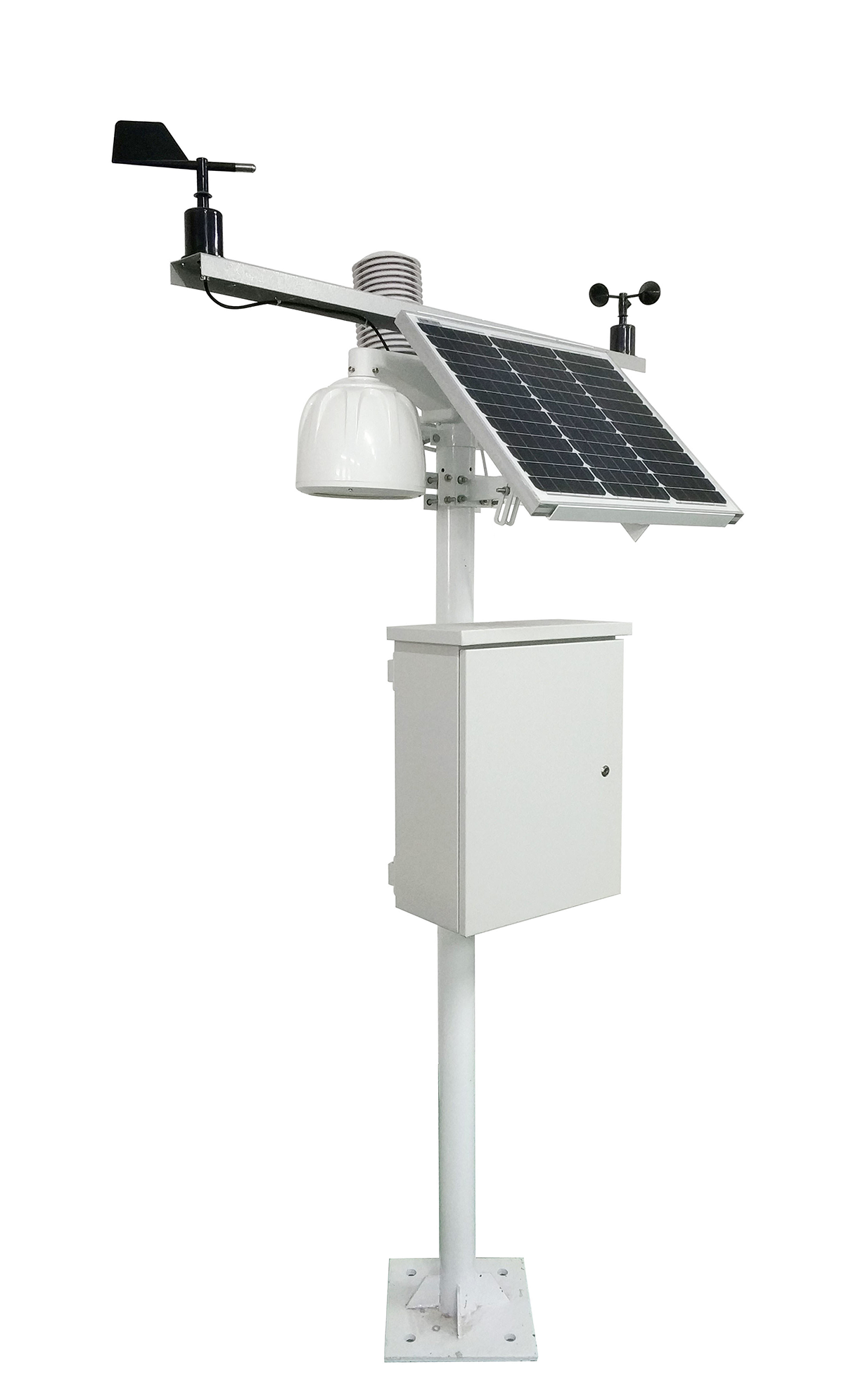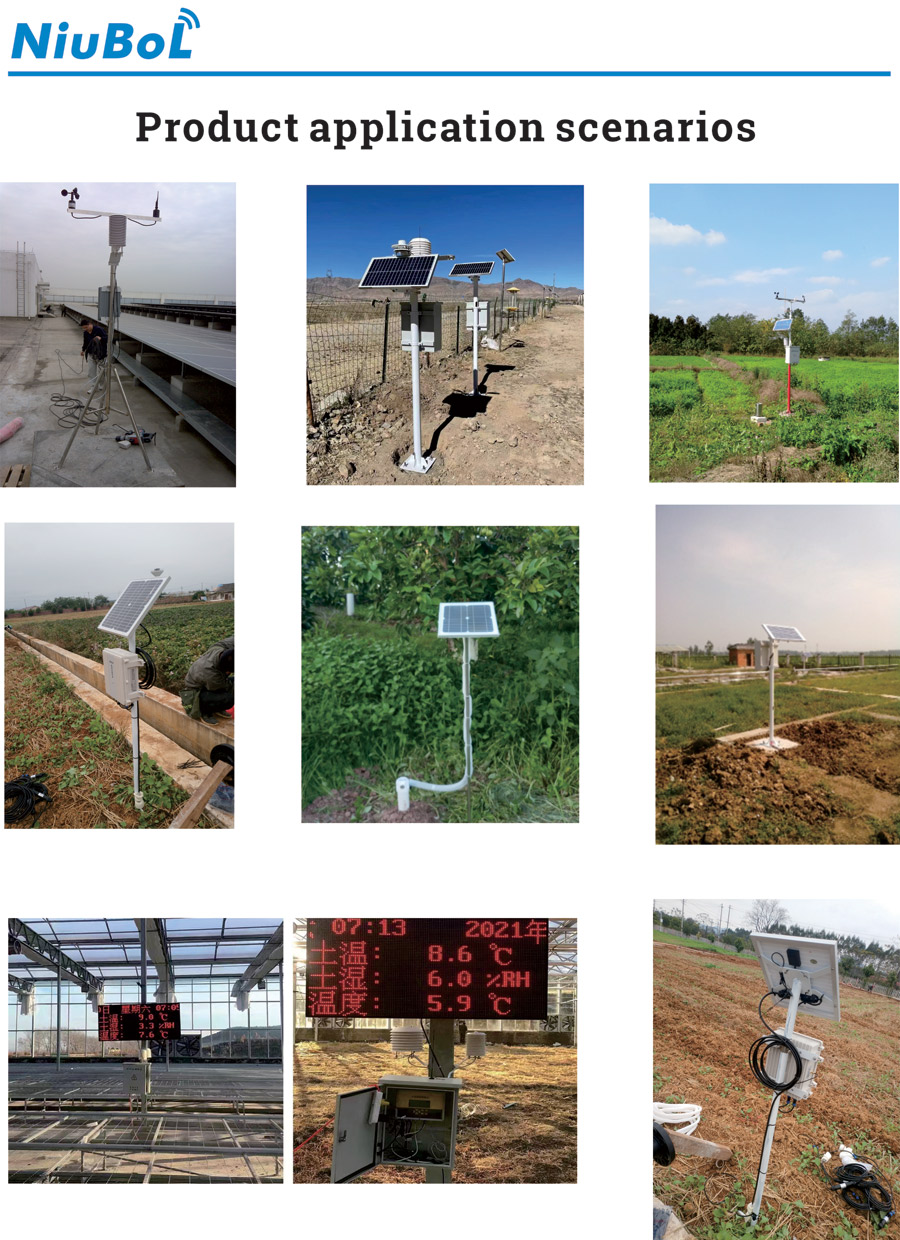

— Blogs —
—Products—
 Consumer hotline +8618073152920
Consumer hotline +8618073152920 WhatsApp:+8615367865107
Address:Room 102, District D, Houhu Industrial Park, Yuelu District, Changsha City, Hunan Province, China
Product knowledge
Time:2023-12-09 18:04:26 Popularity:6363
Weather station is a device used to monitor and record the parameters of the atmospheric environment and consists of the following main components:
1. Sensors: Weather stations have a variety of built-in sensors for measuring and monitoring different meteorological parameters, such as temperature, humidity, barometric pressure, wind speed, wind direction, precipitation and so on. Each meteorological parameter usually corresponds to a corresponding sensor, and the data collected by the sensor reflects the changes in the atmospheric environment.
1. 1 Temperature Sensor: a sensor used to measure the temperature of the atmosphere.
1.2. humidity sensor: a sensor that measures the humidity and relative humidity in the atmosphere.
1.3. barometric sensor: a sensor that measures atmospheric pressure.
1.4. wind speed sensor: a sensor that measures wind speed.
1.5. wind direction sensor: a sensor that measures the direction of the wind.
1.6. Precipitation sensor: a sensor that measures rainfall.
1.7. sunshine sensor: a sensor that measures the intensity of sunshine and ultraviolet radiation.
2. Data logger: The data logger of a weather station is a device used to receive and store the data collected by sensors. It usually has high precision and stability, and can process and record the data collected by the sensors for subsequent analysis and application.
3. data transmission equipment: in order to realise remote monitoring and data sharing, the weather station usually needs to be equipped with data transmission equipment, such as wireless communication modules or network interfaces, so as to transmit the collected data to the central database or other relevant systems.
4. Power supply system: The weather station needs a reliable power supply system to ensure the normal operation of sensors and data loggers. The power supply system can include solar panels, wind turbines, storage batteries, etc. to meet the power demand under different environmental conditions.
5. External protection devices: Since weather stations are usually placed in outdoor environments, in order to protect the equipment from bad weather and environmental conditions, weather stations also need to be equipped with some external protection devices, such as windshields, canopies, lightning protection devices and so on.
Together, these components form a complete weather station for monitoring and recording atmospheric environmental parameters, and for timely transmission and sharing of relevant data. The functions of the various components work in concert to ensure that the weather station is able to accurately measure and record atmospheric environmental parameters and transmit and share relevant data in a timely manner.

Meteorological monitoring data are generally transmitted to meteorological departments or agencies. These departments or agencies usually collect and monitor meteorological data, provide comprehensive weather and climate information, and transmit them in real time to weather centres or data centres. In addition, these data may also be transmitted to other departments or agencies that require such data, such as emergency management authorities.
In terms of transmission methods, meteorological data may be transmitted by wired or wireless means. Wired transmission usually adopts common communication interfaces, such as Ethernet, serial port, etc., which is suitable for shorter distance data transmission. Wireless transmission, on the other hand, adopts wireless communication technology, such as Wi-Fi, Bluetooth, Zigbee, etc., which is suitable for data transmission in complex terrain and long distance.

Communication protocols for meteorological monitoring data transmission:
The communication protocols for meteorological monitoring data transmission mainly include TCP/IP, UDP, LoRaWAN, NB-IoT and so on.
TCP/IP: is a transport layer protocol that provides reliable data transmission and is commonly used for meteorological monitoring data transmission.
UDP: is a transport layer protocol that provides fast data transmission, but does not guarantee data reliability, and is suitable for meteorological monitoring data transmission with high real-time requirements.
LoRaWAN: is a low-power wide area network (LPWAN) protocol suitable for weather monitoring devices that require long operation and long distance transmission.
NB-IoT: is a narrowband Internet of Things (NB-IoT) protocol that can be deployed in an operator's cellular network and is suitable for weather monitoring devices that require large-scale connectivity and low power consumption.
There are also specialised weather monitoring protocols such as GRIB (Generalised Binary Meteorological Data Format) for the storage and transmission of weather data.
Overall, the purpose of weather monitoring is mainly to achieve comprehensive and accurate weather monitoring and warning to meet national and local needs.
Weather Stations Catalog
Weather-Stations-Catalog-NiuBoL-2024.pdf
Related recommendations
Sensors & Weather Stations Catalog
Agriculture Sensors and Weather Stations Catalog-NiuBoL.pdf
Weather Stations Catalog-NiuBoL.pdf
Related products
 Combined air temperature and relative humidity sensor
Combined air temperature and relative humidity sensor Soil Moisture Temperature sensor for irrigation
Soil Moisture Temperature sensor for irrigation Soil pH sensor RS485 soil Testing instrument soil ph meter for agriculture
Soil pH sensor RS485 soil Testing instrument soil ph meter for agriculture Wind Speed sensor Output Modbus/RS485/Analog/0-5V/4-20mA
Wind Speed sensor Output Modbus/RS485/Analog/0-5V/4-20mA Tipping bucket rain gauge for weather monitoring auto rainfall sensor RS485/Outdoor/stainless steel
Tipping bucket rain gauge for weather monitoring auto rainfall sensor RS485/Outdoor/stainless steel Pyranometer Solar Radiation Sensor 4-20mA/RS485
Pyranometer Solar Radiation Sensor 4-20mA/RS485
Screenshot, WhatsApp to identify the QR code
WhatsApp number:+8615367865107
(Click on WhatsApp to copy and add friends)
